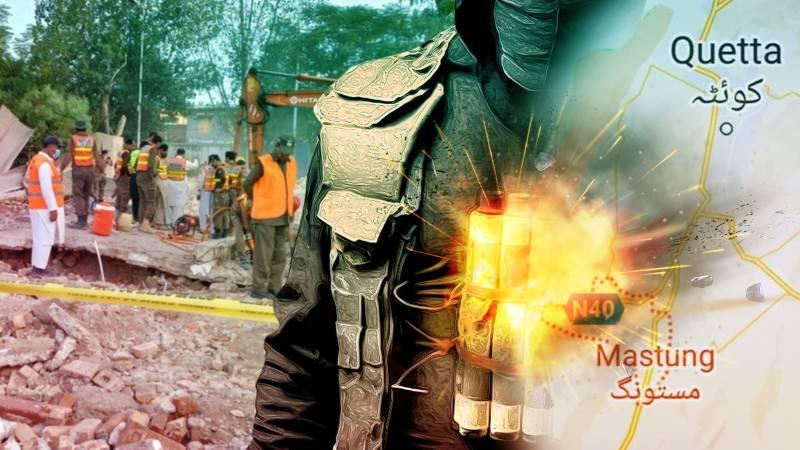
The Mastung Blast: Ramifications For Balochistan
The devastating explosion in Mastung district, claiming the lives of over 50 individuals, while leaving many injured, reverberated across the nation. This incident marked a distressing first in the Baloch region of the province, as prior instances of violence primarily targeted Shia pilgrims en route to Iran or the Hazara community residing in Quetta city.
This incident is particularly distinctive due to its targeting of a procession of the 12th Rabiul Awwal, making it challenging to identify the perpetrators behind this heinous attack. Thus far, no group has claimed responsibility. Notably, the banned Tehreek-i-Taliban Pakistan has explicitly denied any involvement.
While no group has officially claimed responsibility, individuals I’ve spoken to have pointed towards the Islamic State of Khorasan (ISIS-K) as potential culprits. They cite the presence of ISIS in the Baloch region, though they have not provided a clear motive for why ISIS would target the 12th Rabiul Awwal procession. There have been reports of collaboration between the Tehreek-i-Taliban Pakistan (TTP) and ISIS-K in Pakistan when their objectives align. A recent example of this collaboration was evident in the attack on a Jamiat-e-Ulema-e-Islam (JUI-F) Jalsa in the Bajaur district of Khyber Pakhtunkhwa.
Another tragic incident unfolded as two suicide bombings struck a mosque situated within the compound of the Doaba police station in Khyber Pakhtunkhwa’s Hangu, claiming the lives of at least five individuals, while leaving twelve others injured. No one has claimed responsibility for this attack either.
These blasts have further obscured the landscape. A decade ago, I had penned an article on the unspoken alliance between Baloch separatist factions and the Tehreek-i-Taliban Pakistan (TTP). During that time, members of the Baloch Liberation Army (BLA) underwent training by the TTP in Mir Ali, located in North Waziristan. In reciprocation, the BLA offered safe haven to TTP militants within Baluchistan. It was somewhat astonishing that both groups had no discernible ideological connection, yet they collaborated with each other.
In December 2022, the TTP announced that a group of fighters from Makran, Balochistan had joined the group. This was followed by a series of joint attacks by the TTP and BLA in Balochistan, including an attack on a Counter Terrorism Department (CDT) facility in Bannu district in December 2022 and an attack on a convoy of security forces in Kohlu district in May 2023.
Experts in the field suggest that the cooperation between the Tehreek-e-Taliban Pakistan (TTP) and the Baloch Liberation Army (BLA) stems from their mutual objective of undermining the stability of the Pakistani state. The TTP’s ambition revolves around toppling the Pakistani government to institute an Islamic state following the Taliban’s principles. In contrast, the BLA is primarily focused on achieving independence for the region of Balochistan. This convergence of interests has led to their strategic cooperation, as they both perceive it as a means to advance their respective goals.
The emerging collaboration between the Tehreek-e-Taliban Pakistan (TTP) and the Baloch Liberation Army (BLA) has become a paramount security apprehension for the Pakistani government. This formidable amalgamation possesses a collective force comprising thousands of combatants, rendering them highly proficient in executing extensive, high-impact assaults.
The formation of alliances between militant groups can be shaped by a multitude of factors, such as shared objectives, strategic considerations, and external influences. These groups may engage in ad hoc collaboration or maintain intermittent cooperation without formalizing a binding alliance.”
The cooperation between terrorists groups would likely result in a more formidable security threat for Pakistan. Daesh, BLA and TTP have shown a propensity for carrying out large-scale attacks, and their combined strength could enable them to mount even more substantial and coordinated assaults.
While the available evidence does point to a degree of cooperation between the TTP, Daesh and BLA in recent months, it is crucial to underline that there is no definitive confirmation of a formal merger or alliance between these two entities. Nevertheless, this growing nexus of collaboration remains a glaring and pressing security challenge for the Pakistani government.
The alliance might lead to an expansion of their operational areas. While the TTP has traditionally been active in the tribal areas along the Afghan border, the BLA’s focus has been on Balochistan. If they join forces, they could extend their reach into new regions, increasing the overall insecurity across Pakistan.
The collaboration could diversify their targets. While the TTP has primarily targeted security forces and government installations, the BLA has focused on infrastructure and economic targets. Together, they could target a wider range of assets, including civilian populations, which could escalate the humanitarian impact of their actions.
Countering the potential alliance of the Tehreek-i-Taliban Pakistan (TTP), the Islamic State (Daesh), and the Baloch Liberation Army (BLA) presents a complex challenge for Pakistan’s security and counterterrorism strategy. To effectively address this threat, Pakistan should adopt a multifaceted approach that combines military, intelligence, diplomatic, and socio-economic measures.
First and foremost, Pakistan needs to enhance its intelligence-sharing and coordination mechanisms among various security agencies. Timely and accurate intelligence is crucial in identifying and neutralizing potential threats posed by these groups. Additionally, Pakistan should collaborate with neighboring countries, particularly Afghanistan and Iran, to prevent cross-border movement of militants and disrupt their safe havens. Diplomatic efforts should focus on regional cooperation to isolate and undermine these groups while promoting peace and stability in the region. Pakistan should also engage in dialogue with moderate elements within these organizations, seeking to persuade them to abandon violence and participate in the political process, as has been attempted in the past with varying degrees of success.
Source » thefridaytimes.com





